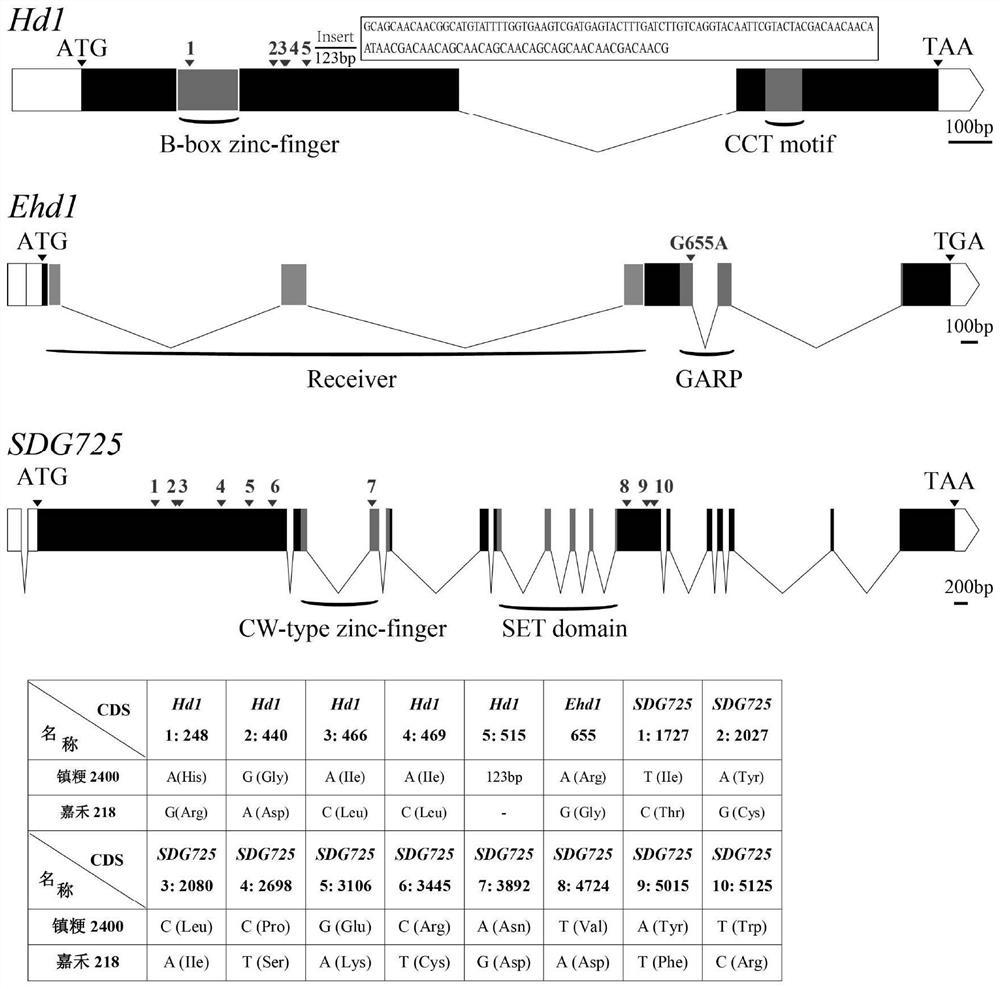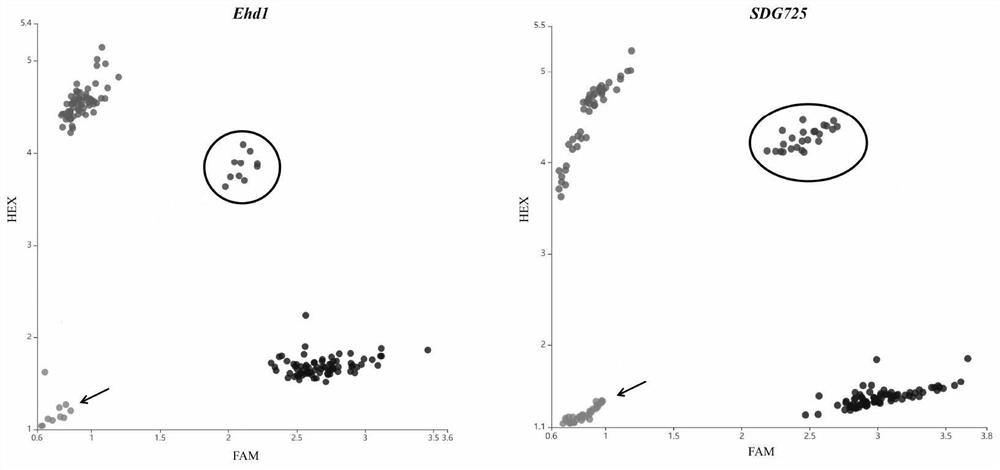Method for creating weak-photosensitivity japonica rice germplasm
A technology for japonica rice and germplasm, which is applied in chemical instruments and methods, botanical equipment and methods, biochemical equipment and methods, etc., to facilitate accurate selection, improve detection efficiency, and increase growth.
- Summary
- Abstract
- Description
- Claims
- Application Information
AI Technical Summary
Problems solved by technology
Method used
Image
Examples
Embodiment 1
[0032] Example 1 Screening and verification of genes related to heading date of parents Zhenjing 2400 and Jiahe 218
[0033] 1. Rice material
[0034] The rice line Zhenjing 2400 is derived from the rice breeding material MNU (methylnitrosourea) by mutagenesis. The complete name of the line is Zhenjing 2400 (Oryza sativa L. Japonica 2400), and its taxonomic status is Oryza genus of Poaceae has been preserved in the China Center for Type Culture Collection, the preservation number is CCTCC NO: P201810, the preservation date is January 17, 2018, and the preservation address is Wuhan University, Wuhan, China, postcode 430072. Jiahe 218 is an early-maturing late japonica rice jointly bred by Jiaxing Academy of Agricultural Sciences and China Rice Research Institute.
[0035] 2. Primer design for Hd1, Ehd1 and SDG725 gene sequencing
[0036] The Hd1 allele in Zhenjing 2400 showed photoperiod insensitivity. Compared with the Hd1 gene in Jiahe 218, this allele had a 123bp insertion...
Embodiment 2
[0048] Example 2 Screening of homozygous families with different genotype combinations in Zhenjing 2400 / Jiahe 218 recombinant inbred lines
[0049] 1. Construction of population and phenotypic identification
[0050] (1) Using Zhenjing 2400 as the female parent and Jiahe 218 as the male parent, prepare a hybrid F 1 , followed by continuous selfing, using the single-seed method, a recombinant inbred line population was constructed, including 247 F 8 strain.
[0051] (2) The constructed recombinant inbred line populations were planted under the conditions of long-day sunshine (Jiangsu) and short-day sunshine (Hainan) respectively, and the full-earing date was investigated, and the full-sowing period (days from sowing to full-earing) was calculated. Phenotype identification, as follows:
[0052] The above-mentioned rice materials are planted twice a year. The first season is planted in the Xingxiang Experimental Base of Zhenjiang Agricultural Science Research Institute in the ...
PUM
 Login to View More
Login to View More Abstract
Description
Claims
Application Information
 Login to View More
Login to View More - R&D
- Intellectual Property
- Life Sciences
- Materials
- Tech Scout
- Unparalleled Data Quality
- Higher Quality Content
- 60% Fewer Hallucinations
Browse by: Latest US Patents, China's latest patents, Technical Efficacy Thesaurus, Application Domain, Technology Topic, Popular Technical Reports.
© 2025 PatSnap. All rights reserved.Legal|Privacy policy|Modern Slavery Act Transparency Statement|Sitemap|About US| Contact US: help@patsnap.com



